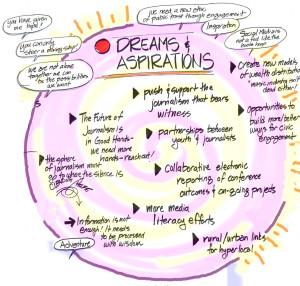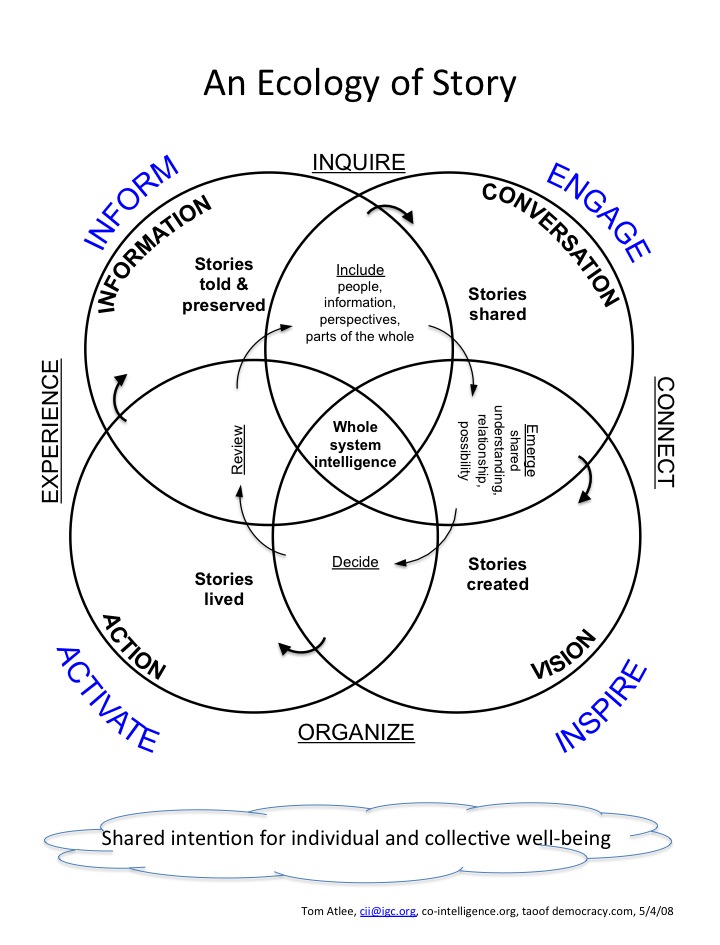Welcome to the The Weekly Illumination, a JTM newsletter offering a quick look at the week in journalism with a focus on what’s working in today’s news ecology. The Illumination is a curated collection of stories about journalism innovation, notable job opportunities, grants and updates about Journalism that Matters.
The newsletter is distributed to e-mail subscribers, through the JTM Google Group, and posted to the Illuminations blog. In this week’s Illumination we’ll highlight the news:re-wired digital journalism conference that just wrapped up, the business of community news sites and explore new opportunities in documentary film.
UK site hosts news:rewired conference
The news:rewired conference took place today at MSN’s UK headquarters. Journalism.co.uk hosted the one-day conference, which featured three different tracks: growing social media communities, mobile journalism, and open data for journalists. There are a wealth of resources available at the conference’s Web site, but two pages stood out as being particularly useful. In a session about turning data sets into maps, John Burn-Murdoch offers a solid introduction on the tools available to create data-rich maps. Another worthwhile post on the site provides a comprehensive list of tools to track and engage audiences over social media, which was pulled from the talk given by Richard Moynihan, Metro’s social media and community manager.
The challenge of moving conferences online
Journalism that Matters is exploring the possibilities within online communities and the potential for hosting its signature gatherings online. One of the most important elements of our all conferences is the opportunity to bring new people together who would otherwise never meet. In this week’s column, I look at how that magic can be created online.
Canada sells cable by the channel, so why can’t US?
Everyone with a cable television subscription in the United States has a list of channels they never watch. For some it’s sports, for others it’s cable news and still others have never bothered to find out what MTV is really about (hint: it’s no longer music television). Then there are those of us who would gladly subscribe to HBO if only we didn’t have to pay $60 a month for the 200 channels we don’t want.
To solve this first-world problem we turn to Canada where cable television is now being sold ala-carte. But the television industry doesn’t want to see this Canadian innovation imported to the States, reports Reuters.
The possibility principle
The third installment of JTM Board Member Peggy Holman’s ongoing series looks at what happens when stories focus on what’s possible instead of simply dwelling on what’s wrong.
“Possibility-oriented storytelling feeds a cultural narrative that helps us to navigate uncertainty by focusing attention on creative ways forward,” said Holman in her article. “Journalism can help us envision and move towards a world that works for all.”
Success of Homicide Watch D.C. leads to launch of new education news site
Three years after launching Homicide Watch, a landmark example of “structured journalism,” which seeks to bundle together narrative reporting, public data, and community submissions into a package made up of pieces that support others, Laura Amico has announced she is starting a new site focused on education. Her company, Glass Eye Media, is launching Leaning Lab to focus on K-12 education reform in Massachusetts.
“Learning Lab likely won’t look much like Homicide Watch, but the same principles — building foundational knowledge, creating tools for the community to interact with the reporting, and setting a space for community conversation at the center — will create the structure for meaningful coverage of Massachusetts’ significant education reform efforts,” said Amico in a post she wrote for Harvard’s Nieman Lab.
VICE expanding its video department
It started as a local Montreal publication almost 20 years ago; today VICE has grown into a multimillion dollar media business across all major mediums. The company has partnered with HBO for a documentary series and its You Tube channel has more than 3 million subscribers. At today’s news:rewired conference, Al Brown head of video at VICE UK said the company plans to focus on growing its video department.
“We’ve always been documentarians and journalists and our video journalism has been the most successful thing that we’ve done,” said Brown.
Visitors to the company’s YouTube channel average more than 25 minutes watching immersive videos produced by its reporters, which further demonstrates that online audiences are willing to sit through longer-form content.
But short-form webisodes will continue to dominate social media, and PBS Mediashift has a great article showing three ways for documentary filmmakers to use the medium to support their feature-length work.
The revenue that keeps community news sites alive
With the shuttering of dozens of Patch sites across the country, a lot of people have been questioning the viability of community news portals online. After all, if AOL’s deep pockets can’t keep a site afloat, is there any hope for the young entrepreneurial journalist or the veteran who refuses to put down his pen after the last buy-out sent him packing.
After Tech Crunch reported on Patch’s insufficient revenue — about $23.5 million a year — Street Fight’s Tom Grubisich decided to analyze that data and compare those numbers with the information he gleaned from speaking to a number of independent publishers on the Web.
Grubisich concluded that Patch’s average of less than $30,000 in revenue per site is abnormally low, and the publishers he spoke with conveyed a more optimistic perspective around possible revenue for community news sites. One publisher said that it a mature publication could generate about $1 per resident in the community per year; each of them indicated that their sites were generating significantly more than $30,000.
Gawker editor talks media ethics
“I do not think as a profession that reporters and editors need to think of themselves as bound by an additional set of conditions,” Gawker Editor John Cook told Toronto’s Globe and Mail (via Poynter). “I think the idea of building up a superstructure of journalism ethics is part of a process of trying to exclude the hoi polloi from the process of reporting and commenting on the news.”
Journalism that Matters strongly supports “journalism by the people.” How do the ethics of journalism affect how citizens participate in creating it?
Job(s) of the Week
Do you want to be in charge of a newspaper? If you’re qualified and ready to move the Valley News is looking for an editor-in-chief for its newspapers in West Lebanon, New Hampshire as well as in White River Junction, Vermont.
For the past 75 years, the Nieman Foundation has offered one-year fellowships. Applications are now available.
Each week, The Illumination will include links to jobs, grants and fellowship opportunities. If you are hiring or know someone who is, send me an e-mail and I’ll gladly list it here. If you’re looking for a job, let me know what kind of work you are looking for and I’ll try to post anything I come across that could be a good fit.
 Possibility-oriented stories generate new options. Research on the relationship between
Possibility-oriented stories generate new options. Research on the relationship between 